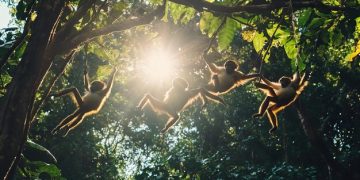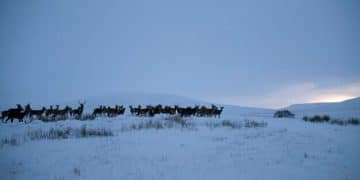Animal Altruism: Exploring Cooperative Behaviors and Evolutionary Origins
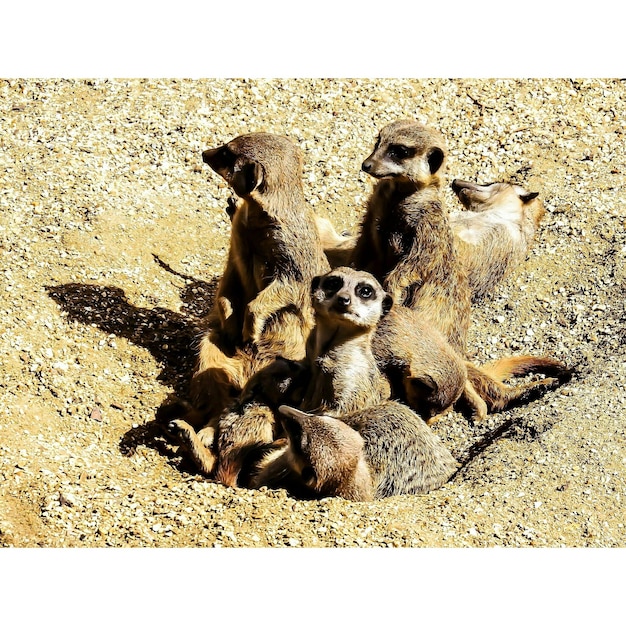
Animal altruism, encompassing cooperative behaviors that benefit others at a personal cost, reveals fascinating insights into evolution, social structures, and the interconnectedness of life, challenging traditional survival-of-the-fittest paradigms.
Dive into the intriguing world of animal altruism: exploring cooperative behaviors and their evolutionary origins, where creatures great and small exhibit selfless acts that challenge our understanding of survival and social dynamics.
Understanding Animal Altruism
Animal altruism, a behavior where animals act in ways that benefit others at a cost to themselves, has long fascinated and puzzled scientists. It challenges the traditional view of evolution, which emphasizes competition and individual survival.
Defining Altruism in the Animal Kingdom
Altruism isn’t just about being nice; it’s a specific behavior. It involves an animal reducing its own immediate fitness (survival and reproduction chances) to improve the fitness of another.
The Paradox of Selflessness
How can altruism evolve if it seems to contradict the ‘selfish gene’ theory? The answer lies in understanding different levels of selection and the benefits that can indirectly accrue to the altruistic individual.
- Kin Selection: Altruism is often directed towards relatives, increasing the chances of shared genes being passed on.
- Reciprocal Altruism: “I’ll scratch your back if you scratch mine” – animals may help others with the expectation of future reciprocation.
- Group Selection: In some cases, altruistic groups might outcompete selfish groups, leading to the spread of altruistic traits.
In essence, animal altruism isn’t just about kindness; it’s a complex strategy shaped by evolution to enhance the survival and propagation of genes, whether directly or indirectly.
Kin Selection: Helping Relatives Survive
Kin selection is one of the most well-understood explanations for altruistic behavior in animals. It suggests that animals are more likely to perform altruistic acts towards their relatives because they share a proportion of their genes.
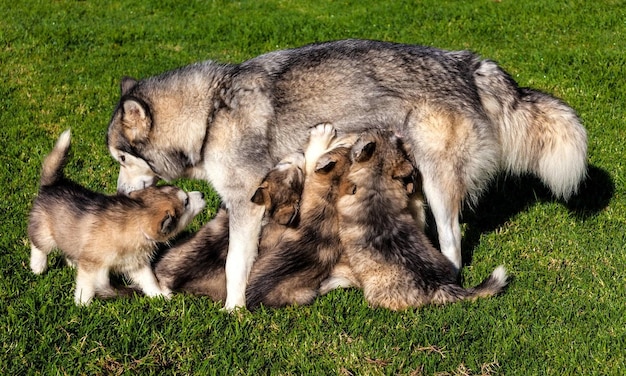
The Genetics of Altruism
The closer the genetic relationship, the stronger the altruistic behavior. For example, a worker bee will sacrifice its life to protect the hive (containing its siblings, with whom it shares a high degree of genetic similarity) because it benefits the survival of shared genes.
Examples of Kin Selection
Several animal species exhibit kin selection, with varying degrees of complexity. Here are a few examples:
- Ground Squirrels: Alarm calls: Ground squirrels are more likely to give alarm calls when close relatives are nearby, even though calling increases the caller’s risk of predation and alerts relatives.
- Social Insects: Sterile worker castes: Bees, ants, and termites have sterile worker castes that devote their lives to caring for their siblings, maximizing the reproductive success of the queen (their mother).
- Naked Mole Rats: Cooperative breeding: Naked mole rats live in colonies with a single breeding female (the queen) and non-breeding workers who care for the young and defend the colony.
Kin selection demonstrates that what appears to be selfless altruism can actually be a strategic move to ensure the survival of an animal’s genes through its relatives.
Reciprocal Altruism: The “Tit-for-Tat” Strategy
Reciprocal altruism, often described as “you scratch my back, I’ll scratch yours,” is a key evolutionary strategy where animals exchange beneficial acts. It’s about mutual help and cooperation among unrelated individuals.
How Reciprocal Altruism Works
The core idea is that an animal helps another, not because they’re related, but with the expectation that the favor will be returned in the future. This creates a network of cooperative interactions that benefit all involved.
Conditions for Reciprocal Altruism
For reciprocal altruism to evolve, several conditions must be met:
- Repeated Interactions: Individuals must interact with each other frequently to allow for opportunities for reciprocation.
- Recognition: Animals must be able to recognize each other to keep track of who has helped them and who owes them a favor.
- Benefit-Cost Ratio: The benefit of receiving help must outweigh the cost of providing it, making the exchange worthwhile.
Reciprocal altruism shows that cooperation can evolve even between unrelated individuals, based on the expectation of future mutual benefits.
Group Selection: Altruism for the Greater Good?
Group selection suggests that altruism can evolve because groups with more altruistic individuals are more likely to survive and reproduce than groups with more selfish individuals. This concept is more controversial than kin selection or reciprocal altruism.
The Mechanics of Group Selection
Group selection hinges on the idea that competition doesn’t just happen between individuals, but also between entire groups. Altruistic behaviors that benefit the group as a whole can enhance the group’s survival and reproductive success.
Challenges to Group Selection Theory
Group selection has faced criticism because individual selection (natural selection acting on individuals) is often a stronger force and more likely to explain altruistic behavior. Selfish individuals within a group could still exploit altruistic members and gain an advantage.
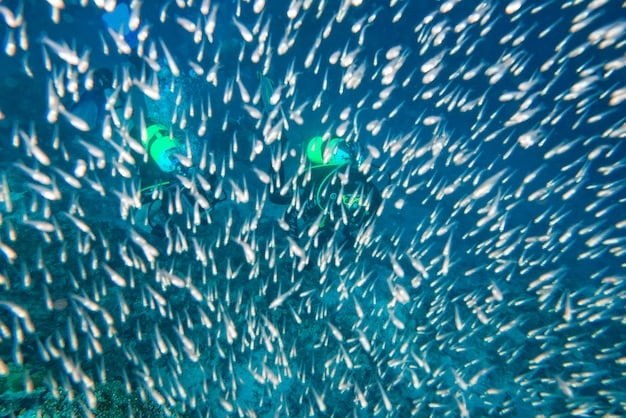
Evidence and Examples of Group Selection
Despite the challenges, some evidence suggests group selection might play a role in certain scenarios:
- Cooperative Hunting: Groups of predators that coordinate their hunting efforts are more successful at capturing prey than individuals acting alone.
- Social Defenses: Animals that cooperate to defend against predators (e.g., mobbing behavior in birds) improve the survival chances of the entire group.
Group selection, while still debated, provides another perspective on how altruistic behaviors could evolve by benefiting the collective rather than just the individual or its kin.
The Role of Empathy in Animal Altruism
Empathy, the ability to understand and share the feelings of others, is increasingly recognized as a potential driver of altruistic behavior in animals. It suggests that animals may help others not just out of genetic or strategic considerations but also because they genuinely feel for them.
Defining Empathy in Animals
Empathy in animals is often inferred through behaviors such as consolation, where an animal comforts another who is distressed, or emotional contagion, where animals share the emotional state of others. It is distinct from simple mimicry or learned behavior.
Evidence of Empathy
While it’s hard to definitively prove empathy in animals, several studies point to its existence:
- Chimpanzees: Chimpanzees have been observed comforting distressed individuals, offering reassurance and support.
- Elephants: Elephants show signs of empathy by helping injured or distressed members of their herd, even putting themselves at risk.
- Rodents: Studies on rodents have shown they exhibit behavioral and physiological responses indicative of empathy, such as releasing pain-relieving chemicals when they see another rodent in distress.
The discovery of empathy-related neural structures and hormonal responses in various animal species further supports the notion that emotions play a significant role in altruistic behaviors.
Challenges to Studying Animal Altruism
Studying altruism in animals is not without its difficulties. It requires careful observation, creative experimental designs, and a deep understanding of animal behavior and social structures.
Identifying Altruistic Behaviors
It can be challenging to distinguish true altruism from other behaviors that might appear selfless but are actually driven by self-interest or coercion. For instance, a subordinate animal might share food with a dominant one not out of kindness but to avoid punishment.
Controlling for Confounding Factors
Researchers must control for various confounding factors that could influence behavior, such as genetic relatedness, social hierarchies, environmental conditions, and individual learning experiences. This often requires conducting experiments in controlled settings.
- Ethical Considerations: Studying animal altruism raises ethical concerns about how animals are treated in experiments and the potential impact of research on their well-being.
- Anthropomorphism: Researchers must be cautious about projecting human emotions and motivations onto animals, which can lead to inaccurate interpretations of behavior.
Despite these challenges, ongoing research continues to shed light on the complexities of animal altruism, revealing the diverse ways in which animals cooperate and help each other.
| Key Point | Brief Description |
|---|---|
| 🤝 Kin Selection | Favoring relatives to pass on shared genes. |
| 🔄 Reciprocal Altruism | “You scratch my back, I’ll scratch yours.” |
| 🌍 Group Selection | Altruistic groups outcompete selfish ones. |
| 🤔 Empathy Role | Empathy drives some altruistic actions. |
FAQ Section
▼
Animal altruism refers to behaviors where an animal acts in a way that benefits another at its own expense. This behavior challenges the traditional evolutionary view focused on individual survival.
▼
Kin selection explains altruism by stating that animals are more likely to help relatives due to shared genes. Helping relatives survive increases the chances of these shared genes being passed on.
▼
Reciprocal altruism is a strategy where an animal helps another, expecting that the favor will be returned in the future. This benefits both individuals involved and promotes cooperation.
▼
Yes, there’s growing evidence of empathy in animals. Studies show some animals exhibit behaviors like comforting distressed individuals, suggesting they understand and share others’ feelings.
▼
Studying animal altruism is challenging due to difficulties in distinguishing true altruism from self-interested behavior, controlling confounding factors, and avoiding anthropomorphism when interpreting animal behaviors.
Conclusion
In conclusion, animal altruism presents a multifaceted view into the motivations and behaviors that drive cooperation in the natural world. From kin selection ensuring genetic survival to reciprocal altruism fostering mutual benefits, and the burgeoning evidence for empathy, it’s clear that animals engage in complex social interactions that defy simple explanations of self-interest. Understanding these behaviors not only sheds light on the evolutionary forces at play but also offers profound insights into the interconnectedness of life and the importance of cooperation in shaping the social landscape of the animal kingdom.

